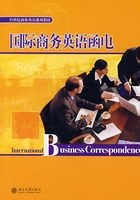
Remarks
Price is the crux matter in business, and price is always the focus for offers and counteroffers. That's why both parties—the importer and the exporter—are always fighting for better price.
In a modern market economy, information about price is required for a wide variety of purposes. Perhaps the most important of these is like a tool in the formulation of economic policy at the governmental level. Price statistics are required to measure economic growth; to measure changes in the relative position of particular groups in the economy; and to determine the degree to which the government will pursue policies that stimulate or dampen economic activity.
Price statistics are important in the business world, too. Sometimes contracts are concluded at a stated price that is subject to upward revision if prices change. A more widespread and important use of price statistics in business is in connection with planning. Some large firms maintain systematic price records so that cost estimates can be quickly prepared when desired.
But how is price measured?
Price for specific commodities, services or securities is not hard to gather or to understand. Wholesale price quotations for primary products and basic manufactures are published in trade journals or by government agencies in many countries. Well, over 100 such quotations for different products and different countries can be found each month in the United Nations'Monthly Bulletin of Statistics. Retail prices for commodities are most usually available on a regular basis in government publications. In the United States, for example, the Bureau of Labor Statistics publishes the average urban price of food and fuels each month. In some countries, including Germany and Japan, price is available for a much larger number of nonfood items than in the United States. The Japanese data are particularly detailed and include price for many commodities in many different parts of the country.